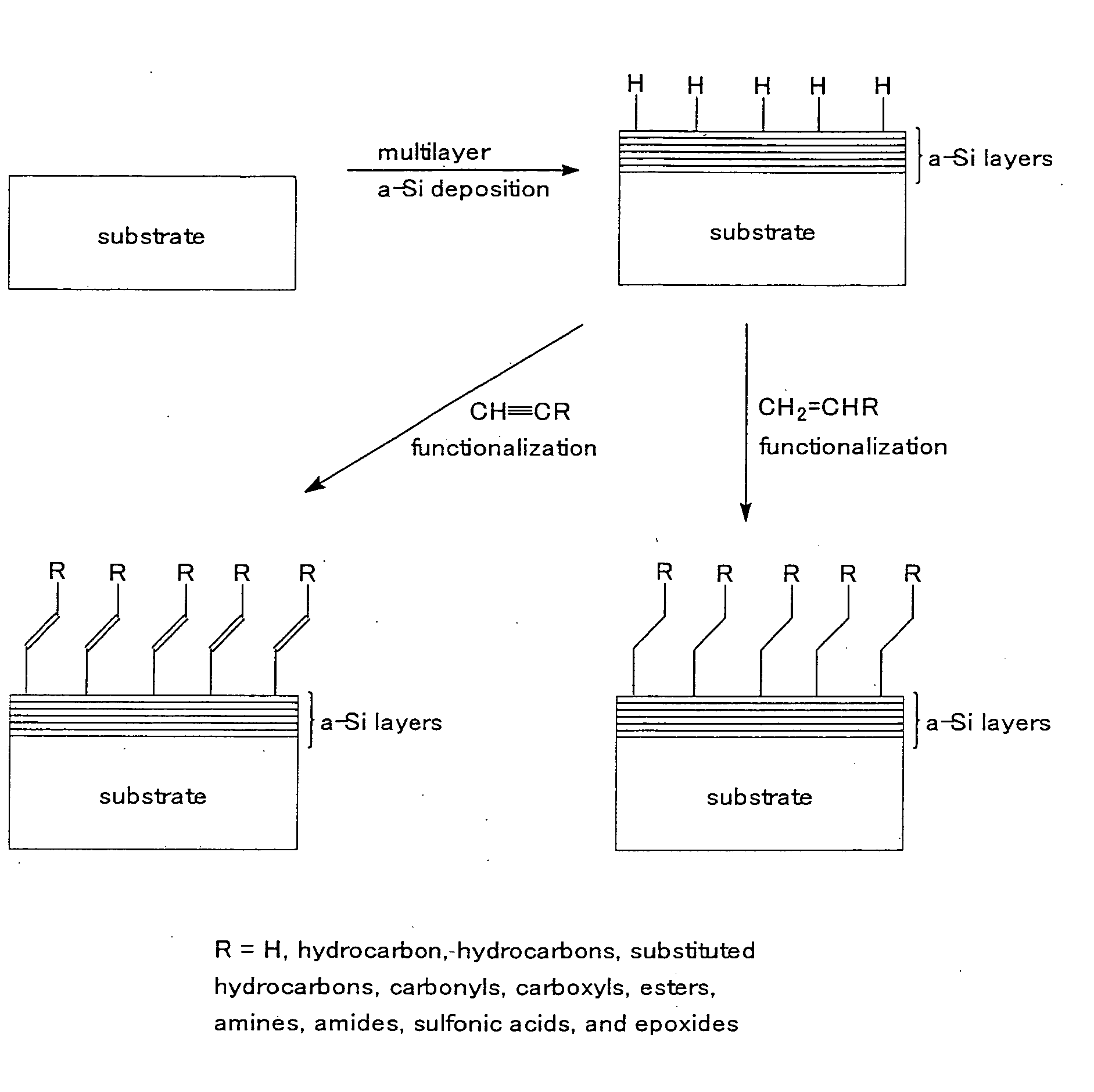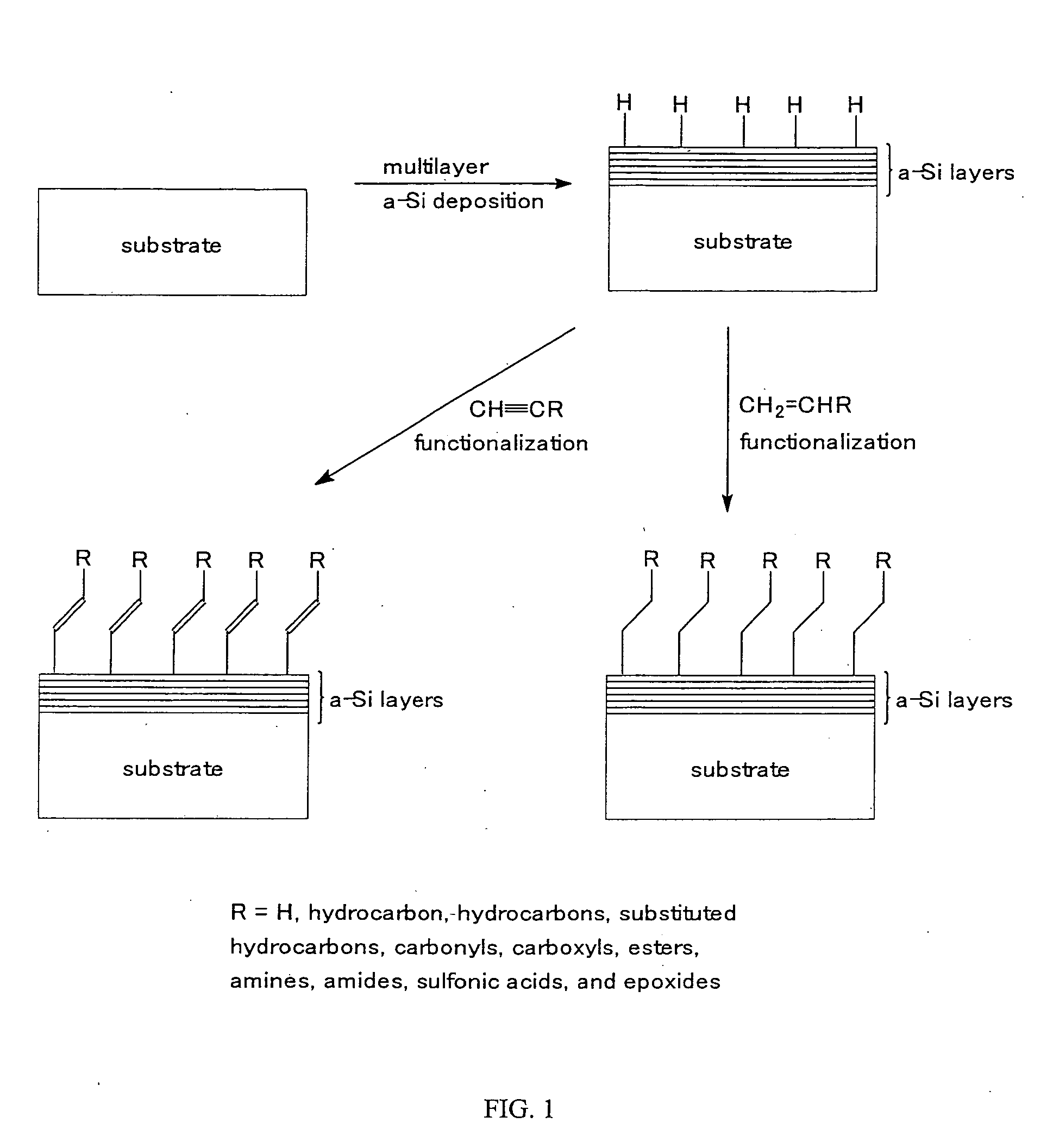Process for the modification of substrate surfaces through the deposition of amorphous silicon layers followed by surface functionalization with organic molecules and functionalized structures
a technology of organic molecules and substrate surfaces, applied in the direction of water-setting substance layered products, transportation and packaging, coatings, etc., can solve the problems of corrosive attack, structural and/or cosmetic breakdown of the substrate surface, and the multi-layer silicon surface alone may have inadequate inertness and functionality characteristics, and treatment may have insufficient anti-corrosion and/or anti-outgassing performance, etc., to prevent corrosive attack, enhance properties, and accelerate water desorption
- Summary
- Abstract
- Description
- Claims
- Application Information
AI Technical Summary
Benefits of technology
Problems solved by technology
Method used
Image
Examples
Embodiment Construction
[0020]The present invention provides a method of passivating the surface of a substrate to protect against corrosion, alter the surface chemisorption, physisorption, and / or electronic properties, and / or to improve the performance of a surface within a vacuum environment. The invention provides a chemical vapor deposition process through which a substrate is coated with silicon followed by a final surface functionalization to impart improved properties for application in environments exposed to corrosive, chemical and / or vacuum environments. The use of single to multiple deposition layers with intermediate changes in process temperature, pressures and time, followed by a functionalization step involving the covalent bonding of molecules containing the unsaturated moiety of —CH═CH2 and / or —C≡CH has been found to impart coatings that provide enhanced properties to the substrate being treated that include, but are not limited to, application in corrosive environments for improved resist...
PUM
| Property | Measurement | Unit |
|---|---|---|
| Temperature | aaaaa | aaaaa |
| Temperature | aaaaa | aaaaa |
| Temperature | aaaaa | aaaaa |
Abstract
Description
Claims
Application Information
 Login to View More
Login to View More - R&D
- Intellectual Property
- Life Sciences
- Materials
- Tech Scout
- Unparalleled Data Quality
- Higher Quality Content
- 60% Fewer Hallucinations
Browse by: Latest US Patents, China's latest patents, Technical Efficacy Thesaurus, Application Domain, Technology Topic, Popular Technical Reports.
© 2025 PatSnap. All rights reserved.Legal|Privacy policy|Modern Slavery Act Transparency Statement|Sitemap|About US| Contact US: help@patsnap.com


